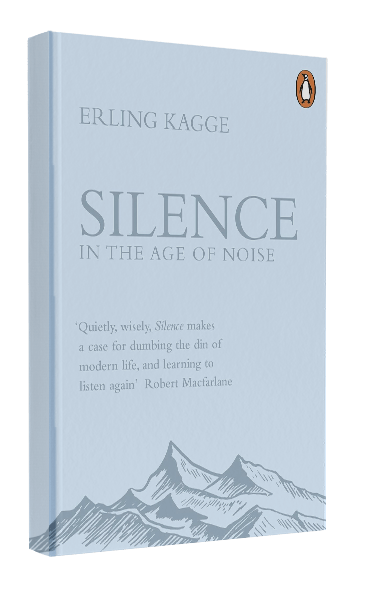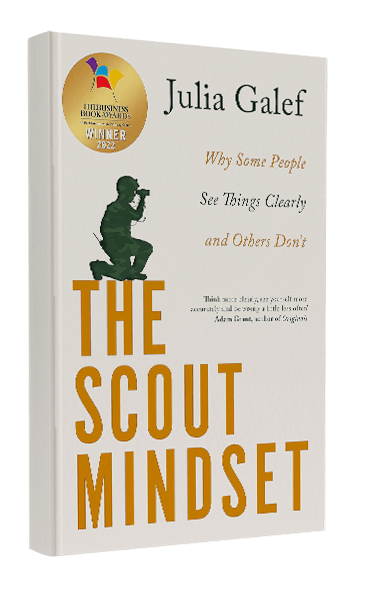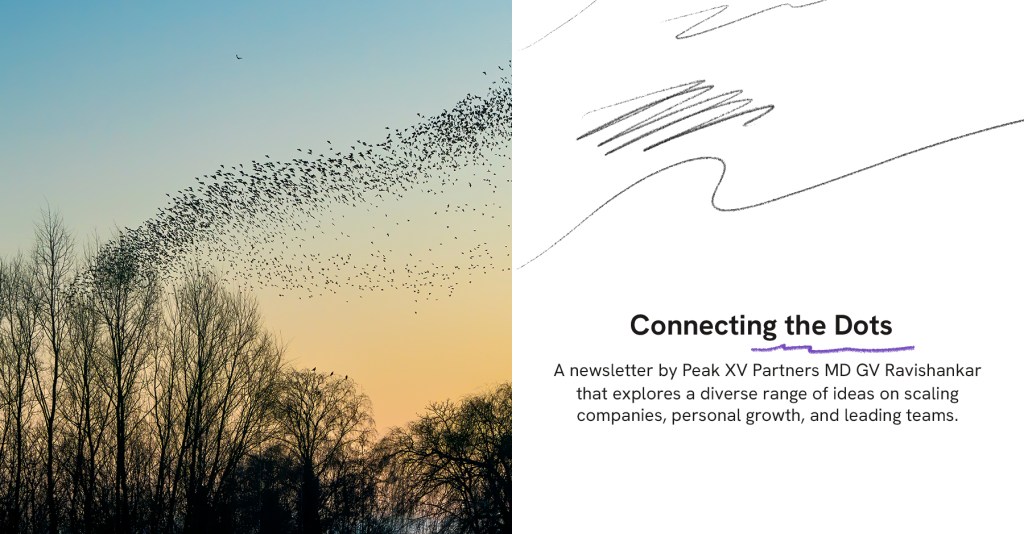The Uses of Not
ByGV Ravishankar
PublishedJune 11, 2024
Activity is visible and seems to validate us. But ‘active patience’ is often more valuable than activity.
In the business of investing, we struggle to deal with the lack of activity when markets are slow. I was reflecting on this recently and wondered how, for most of us, activity has become a proxy for progress. If we are not busy, we feel we aren’t productive. In fact, the definition of productivity has moved from getting work done to completely filling our time. Being busy has become a sign of hard work, and most of us take pride in being busy. And when we are not busy, we feel like we are slacking; we carry a sense of guilt and worry about losing our edge. This is certainly me, but if this sounds like you, read on.
Can we actually get paid in our jobs for doing nothing? No. But we can get paid for doing almost nothing most of the time. Sounds impossible? But the very best seem to get away by just doing that. Warren Buffett sits and reads much of the day, only making a few investments every few years. And yet, he is among the richest in the world. Aamir Khan does one movie every few years and continues to be a superstar.
Take Lionel Messi, the famed football star, who runs for an average of three minutes in a game of 90 minutes. Sunil Chhetri, the ex-captain of the Indian football team, spoke to us and our founders at Peak XV’s Founder Retreat last year and shared how Messi was in action for such a short time and how what he does in the remaining 87 minutes of the match matters so much.
Johan Cruyff, the Dutch footballer, said, “When you play a match, it is statistically proven that players actually have the ball three minutes on average. So, the most important thing is: what do you do during those 87 minutes when you do not have the ball? That is what determines whether you’re a good player or not. You play football with your head, and your legs are there to help you.”
Legs operate on muscle memory. When the ball is in your possession, you only have it for a few seconds, and that’s not enough time to really think and strategize. So you want to execute in those few seconds to maximize the impact you can create for your team. So what you do in those three minutes is a function of how you set up yourself and your team in the remaining 87 minutes. More significantly, it’s also about what you do (or don’t do) when not on the playing field.
This formed the key thesis of coaching for Brad Stine, the tennis coach who took Jim Courier to world #1 and later coached Kevin Anderson, the two-time Grand Slam finalist. Stine observed that professional tennis players only actively played for 20% to 30% of a match, and the rest of the time was spent between points. He figured those non-active times are as critical as play time to ensure the players deliver their best with the racquet in their hands. He devised strategies for players to feel more in control and more positive during these times, resulting in them being better prepared during the actual game.
This brings me to The Uses of Not, Ursula Le Guin’s version of Lao Tzu’s Tao Te Ching:
Thirty spokes
meet in the hub.
Where the wheel isn’t
is where it’s useful.
Hollowed out,
clay makes a pot.
Where the pot’s not
is where it’s useful.
Cut doors and windows
to make a room.
Where the room isn’t,
there’s room for you.
So the profit in what is
is in the use of what isn’t.
In this text, Lao Tzu beautifully articulates how the invisible complements the visible. This provides a pointer to what we have to focus on to improve our performance. Replace some of the activity with boredom, with time for thinking, reading, and reflecting. For many knowledge workers, this time of pause and apparent inactivity is our preparation for the times when we are in action. Much like athletes training for their match time by building muscle memory from practice, we need to prepare through the assimilation of knowledge and reflection.
For high productivity and good outcomes, it’s important to know what not to do in addition to knowing what to do. Only a few things really matter, and when all is said and done, a few important decisions would have defined your career and life. In our desire to be busy, we often fill our calendars with things that crowd out and take away space for the ‘emptiness’ necessary for clear thinking, thus hindering our ability to do things effectively.
“I saw the angel in the marble and carved until I set him free.”
The sculptor Michelangelo’s ability to see the end product in a solid block of marble shows how we can chip away at the things that aren’t adding value and focus on the important things. This gives us the room we need to slow down to reflect and learn.
Activity is visible and seems to validate us. But ‘active patience’ is often more valuable than activity. Active patience is about preparing for the action ahead.
In his paper titled Trading is Hazardous to Your Wealth, Brad Barber articulates how active trading was leading to poorer outcomes than patient compounding. In investing, compounding is active patience. An easy way to understand this is how when you are trying to build muscle using a combination of diet and exercise, it is important to give your body enough rest after a workout. This is so that your efforts get the time to compound and add up.
“Patience is not passive, on the contrary it is concentrated strength.”
― Bruce Lee
I constantly remind myself not to confuse activity for work. And to embrace active patience. Remember The Uses of Not to unlock peak performance!
“In our desire to be busy, we often fill our calendars with things that crowd out and take away space for the ‘emptiness’ necessary for clear thinking, thus hindering our ability to do things effectively.”
Recommended Reads
Here are three articles I found interesting:
- This shouldn’t come as a surprise to any of us, but it is increasingly clear we can’t take anything for granted and have to come to our own conclusions instead of relying solely on what’s presented in the media. The idea of what an ideal breakfast looks like is one such example and this article, Breakfast: the Biggest Marketing Success Story, talks about how the staple American breakfast, which is increasingly a popular breakfast across the world, immensely benefited from a single man’s extraordinary marketing skills.
- Longevity is one of the hottest areas of research and investment, especially since Silicon Valley has started focusing on this subject. I should admit that I keenly follow some of this work, and so I was rather curious about how the jellyfish lives forever, which is what this article addresses in Immortal Jellyfish: The Secret to Cheating Death.
- Crosswords were first published a hundred years ago, and this article takes us through the humble and uncertain beginnings of what is now assumed to be a standard in every newspaper of repute.
If you have time for longer reads:

Silence: In the Age of Noise by Erling Kagge
Kagge, a renowned Norwegian explorer, delves into the profound significance of silence in our increasingly hectic and noisy world. He presents silence not just as the absence of sound but as a means to achieve inner peace, heightened awareness, and a deeper understanding of oneself and the world. Kagge argues that embracing silence can lead to a more meaningful and balanced existence.

The Scout Mindset by Julia Galef
If you leave out ‘the Scout Mindset’ from the title, this is another behavioral economics book that will remind you about how we carry biases that affect how we think and act and what we can do to think and act clearly. Galef introduces the concepts of the “scout mindset,” characterized by curiosity and a desire for truth, as well as the “soldier mindset,” which is driven by defensiveness and confirmation bias. Through engaging anecdotes and scientific research, she illustrates how adopting a scout mindset can lead to better judgments, improved problem-solving skills, and debates that are more productive.
Do write in at gv@peakxv.com if any of my interests intersect with yours! Click here to read more articles on Peak XV’s blog. For more editions of Connecting the Dots, click here. I’m also on LinkedIn and Twitter.
